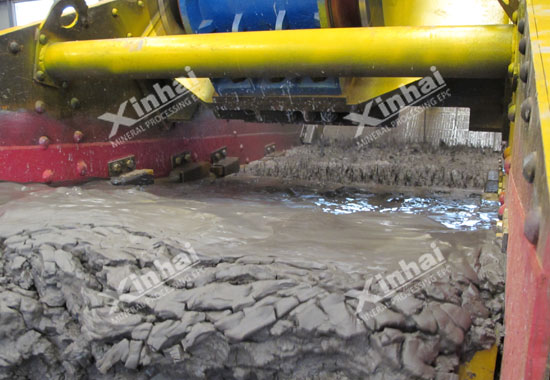Tailings dry stacking—new choice of tailings treatment
By:Xinhai
2018-05-28 | Browse the number (5806)

Long time ago, tailings is treated as a valueless product in the mineral processing industry. However, with the development of mineral processing technology, people find that tailings have great potential to be explored.
But how to cater for the national policies and how to effectively deal with tailings with a low cost become the major problems for the mineral processing industry. According to the tailings disposal, governments publish a series of relevant policies to guide the tailings disposal.
It was reported that there were about 14 billion tons of tailings by the end of 2011. Which only were 1 billion tons in 2007. A large amount of tailings brought a series of problems for mineral resources, environment, security and lands. However, the bigger the pressure is, the bigger the potential of development and utilization is
The main problem is the low utilization of the tailings, many mine owners still have no sense of tailings dry stacking, which stops the development of relevant pollution control work. Thus, Xinhai successfully developed a set of innovative process to deal with tailings, it was the first domestic company who developing tailing dry stacking technology and equipment. In 2009, Xinhai started to develop the third generation tailing dry stacking technology and equipment—hydrocyclone, high-efficiency thickener and high-efficiency multi-frequency dewatering screen. This process was featured with low investment, less running cost, high efficiency and low energy consumption.
Tailing dry stacking is a new tailing treatment technology. In the dry stacking method, filters and vacuum presses remove most water, which can be recycled for process water, reused in the flotation step for instance. Typically, dry tails contain less than 25% water. Dry tails are transported to the tailing piles by conveyor belt or truck, then dumped and compacted. Tails don’t need a containment structure and are more stable. Dry stacked tailings are essentially immune to geotechnical “failure” and can be designed to withstand static and seismic forces. Because there is much less water in the tails, there is less chance of seepage. In the future, tailing dry stacking is the only way for the mining industry.
All in all, tailings dry stacking is the preferred choice for the customers by relying on its high efficiency and energy saving, which not only saves mineral resources, but also protects the environment.
